Can I Cook With Rendered Beef Suet
We've established that french fries fried in beef tallow are more delicious than those fried in, say, peanut oil. Simply how does one come by beef tallow? It's not readily available in stores like it was in our grandparents' twenty-four hours. Yes, you lot can purchase it online, and if you're fortunate, you can purchase some from a local producer at a farmers' market. But if you don't have access to those resources, what are you to do? Well, make your own.
What is tallow?
To brainstorm with, tallow is the rendered fat of mutton or beef, though in American parlance, it well-nigh exclusively refers to beef. It is a loftier smoke-signal oil that is highly saturated, with a rich flavour. It was used for generations in deep-fry applications until the cholesterol scare of the 1980's put an end to its widespread utilize.
Why use beef tallow for frying?
As we've already said, beef tallow makes delicious foods when used for deep frying. But information technology also has temperature advantages. We have plant that beef tallow has a higher heat capacity than peanut oil, meaning it tin do more than rut-piece of work per degree than peanut oil. Plus, beef tallow is high in niacin, which is ane ot those "recommended vitamins and minerals" you're already not getting plenty of, so that's overnice.
Another advantage that beef tallow has over vegetable oils is its longevity. Beefiness fat is a highly-saturated fat, which is why information technology solidifies at room temperature. But saturation provides a longer life for the oil. According to Dr. Oscar Expressway, a food scientist at Brigham Young University who specializes in oils, information technology is theunsaturated fats in oils that break downwardly after repeated heating and cooling. A highly saturated fat similar beefiness tallow isn't as susceptible to useage-decay as, say, soybean oil.
As long as it'due south stored properly in an airtight container—preventing oxidation—beef tallow volition be proficient for many uses before you accept to replace it.
What fat to use to render beef tallow
To start with, you will need some beef fatty. Most grocery shop meat departments (if they have in-house meat cutters) will save beef fat for you if you lot let them know in advance that you'll be wanting some. What they give y'all will be fat from prime number rib roasts, T-bone steaks, and other diverse cuts. Ask them to run it through the grinder for you, and information technology will do okay. But, according to traditional recipes and some first-hand experience, the all-time tallow comes from beefiness suet.

Suet is the clumpy, almost cake-y fat that surrounds the kidneys. It hides beneath the loins of the cow. If you tin can get suet from a grocery store meat department, cracking for you. I had to go to a local slaughterhouse/butchery to get mine. It really is worth getting the suet for a purer, meliorate tallow. I still advise request the butcher to run information technology through the grinder, though.
Rendering beef tallow
- If the butcher has not ground your tallow, y'all volition need to. Working in small-scale batches, pulse the tallow in a nutrient processor until finely minced. I recommend holding the pulse button while dropping a few pieces of tallow through the feeder chute at a time.
Note: be sure your suet iscold—as in partially frozen. It is soft and volition glue up in the machine when warm.

- One time all your tallow is ground, put it in a big pot and add enough hot water to peek through the tallow's surface. Put the pot on a stove and turn the heat to high. The goal is to melt the proteins in the beefiness suet so that they don't stick to the pan or each other while simultaneously starting to render the fat from the cells.
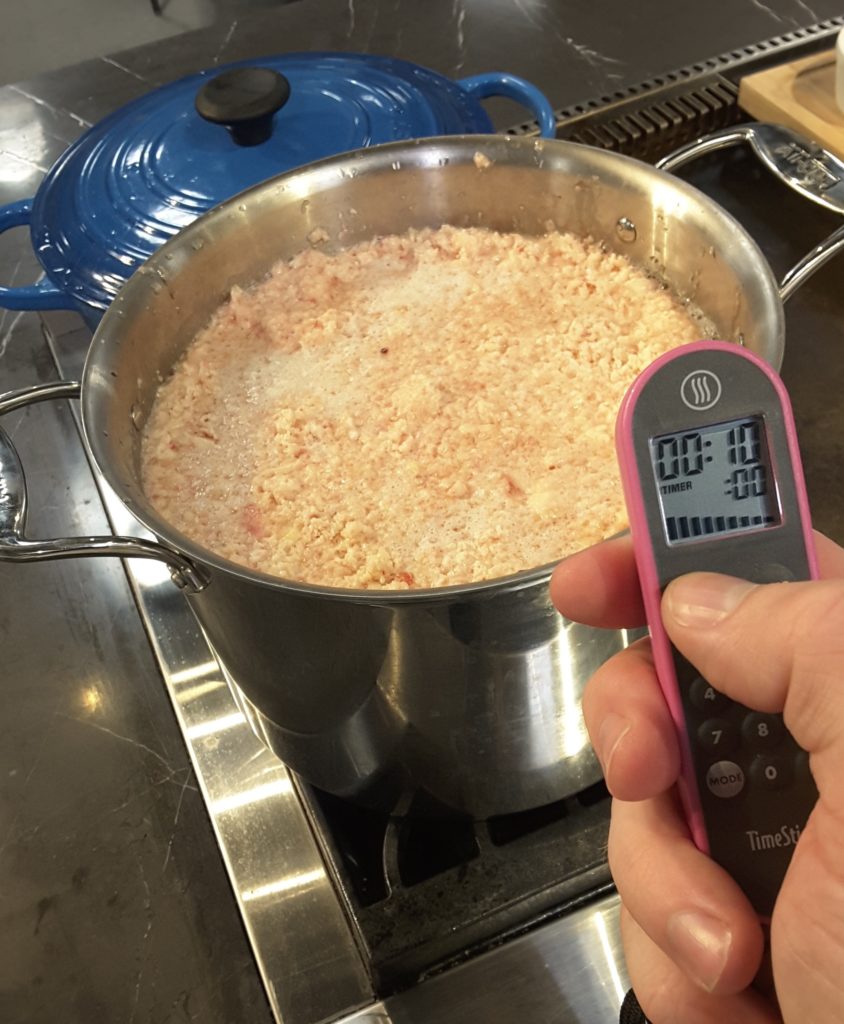
- Bring the h2o in the pot to a heavy simmer and start scooping the scum off that forms on the surface. Stir the suet so that it is all swimming freely and can melt.
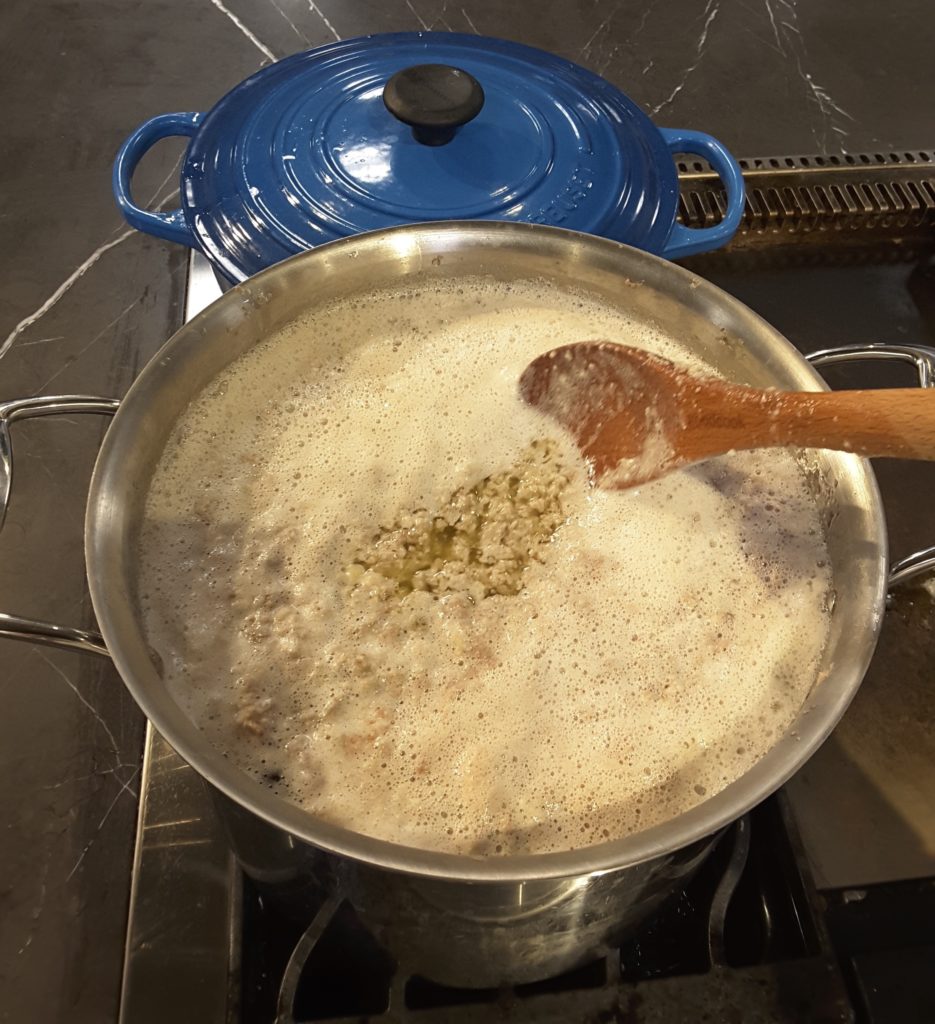
- Once the pot stops producing copious scum, permit it go at a high simmer.You'll want to continue an eye on it, but it doesn't need to be tended to constantly. Check on it from time to fourth dimension to make certain it isn't boiling over, clumping besides much, or sticking to the bottom—go a TimeStick ® and set it for 10 minutes, check on information technology, reset for x minutes, etc. Yous're going to cook all the water out of the pot and out of the fat tissues. This will have some fourth dimension!

- Over time, you lot will observe a motion picture of fatty floating on the water which will get thicker and thicker. Don't worry, this looks nil like the foam layer. It volition look like you poured, well, oil in the pot. The simmering volition exist but what you expect. Adjust the flame to avoid boiling it besides quickly, which can atomic number 82 to boil-overs.
- Subsequently an hour or and so, depending on how much fatty you started with, you will discover a change in the sound of the boil—which will take a deeper, more gurgle-y chimera to it—and y'all will see even more fat on the surface of the h2o. This will mean that you are starting to run low on water. Turn the oestrus down a petty bit and gear up the timer for x more minutes.
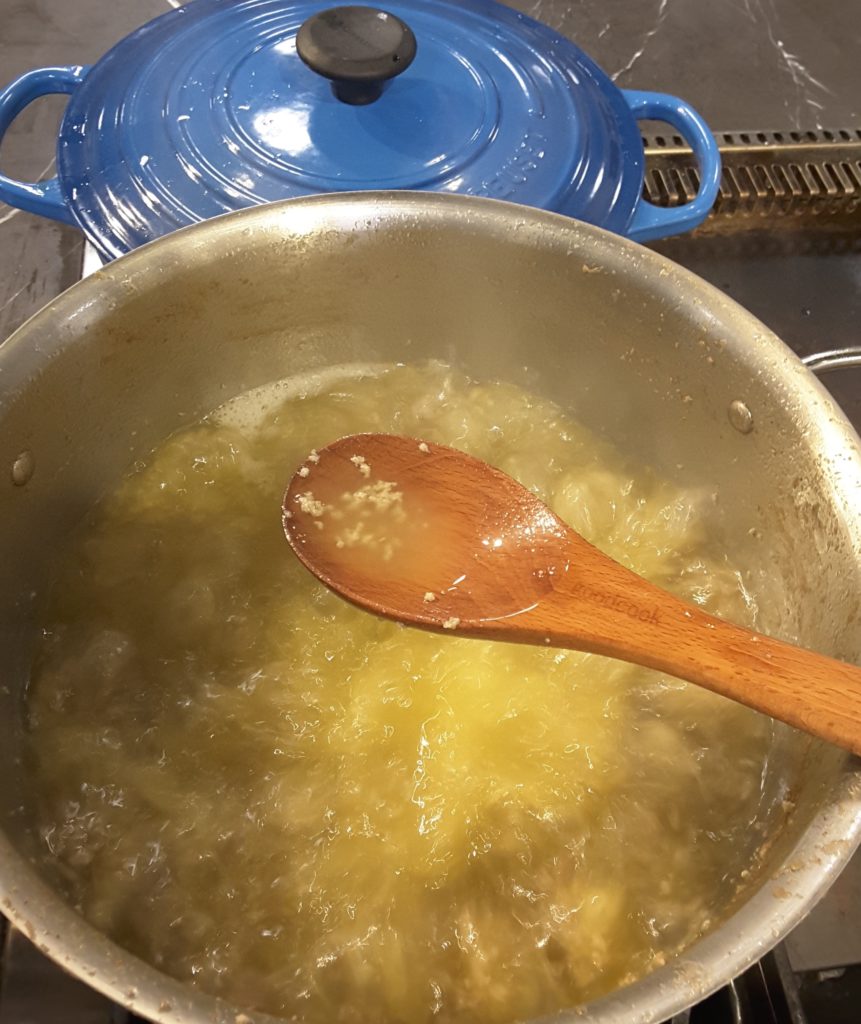
- Give the tallow a stir, scraping the lesser. If any bits are sticking to the lesser, scrape them upwardly to foreclose burning. This is when paying attention becomes more important. As the water dries out and the pot is filled more and more with rendered fat, those bits are going to starting time cooking to the bottom of the pot. A apartment-nosed wooden spatula is a great style to keep that from happening.
- The bubbling in the pot will start to get smaller and more oily looking as the water cooks out. At present yous'll desire to take hold of a Thermapen ® and start spot checking the temperature. Every bit the water cooks out, the temp in the fatty will start to rising. As it passes 212°F (100°C), the water in the lilliputian bits volition start to sizzle out, creating very pocket-sized bubbles all over in the pot. Nosotros want to cook the fat to 230°F (110°C). This temperature ensures that we've cooked a good deal of the water out of the fatty bits, only isn't then high that we've started to crisp and brown them, thus tainting the oil with denatured proteins. Keep scraping the bottom of the pan with your wooden spoon throughout this procedure!

- Once y'all reach230°F (110°C) kill the heat on the oil and let it absurd for a half hour or more. The compact bits will settle to the bottom and y'all tin can strain the oil through a fine-mesh sieve or some cheesecloth. Press out the bits to excerpt as much oil as possible.
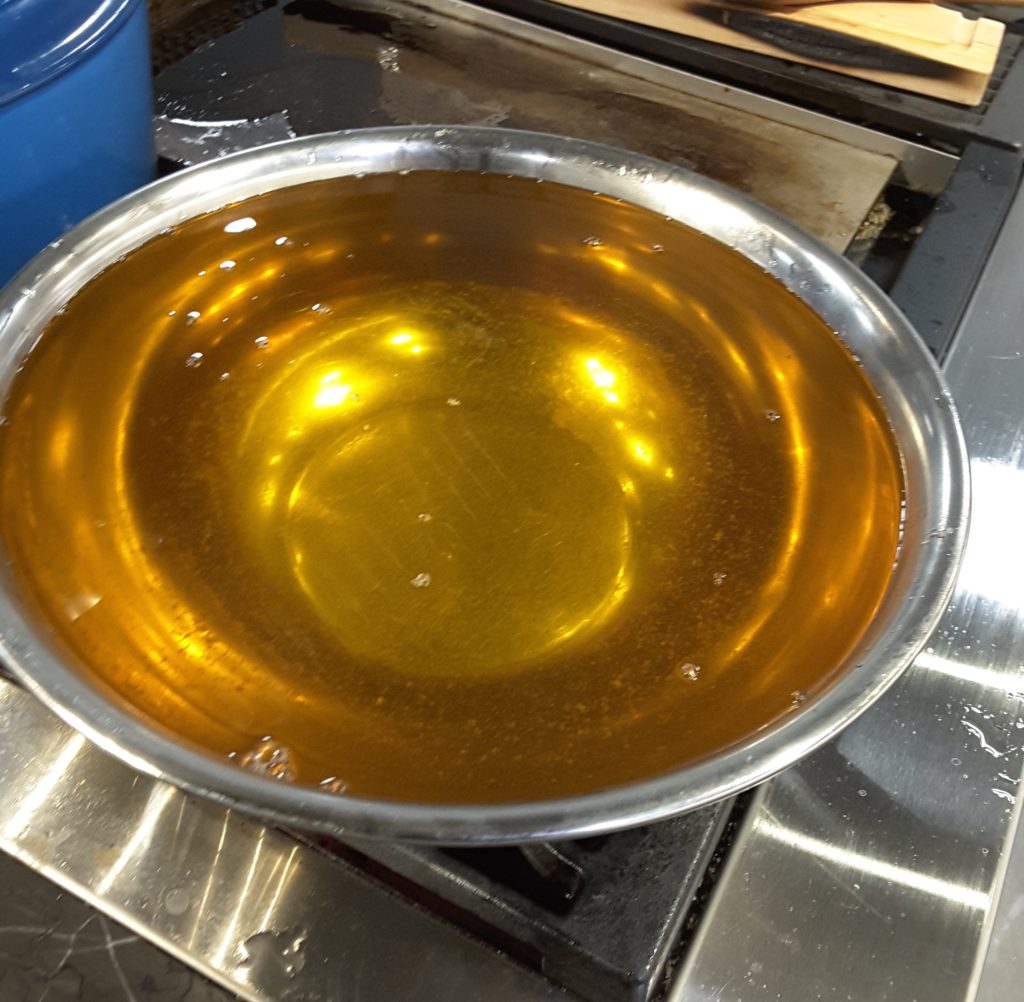
- Allow the oil to absurd on the countertop. It volition solidify and turn a beautiful buttery gilded colour. If y'all want to salvage it for later, you tin freeze it; but even under regular refrigeration, it will already final for months if non longer. If it e'er smells like rancid beefiness, it'south not proficient anymore.
And then there you accept information technology, a method for rendering your own golden, succulent beef tallow for deep frying, sauteeing, and any other high-temp cooking needs you may have. Utilize your TimeStick to proceed an heart on things and a Thermapen® to make sure you cook it to the right temp, and enjoy!
If you'd like a cracking idea for what to practice with your tallow, utilise it for frying french fries!
 |  |
|---|
Products used:
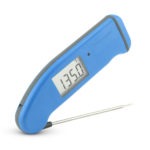 |  |
|---|
Source: https://blog.thermoworks.com/beef/how-to-render-beef-tallow/

0 Response to "Can I Cook With Rendered Beef Suet"
Post a Comment